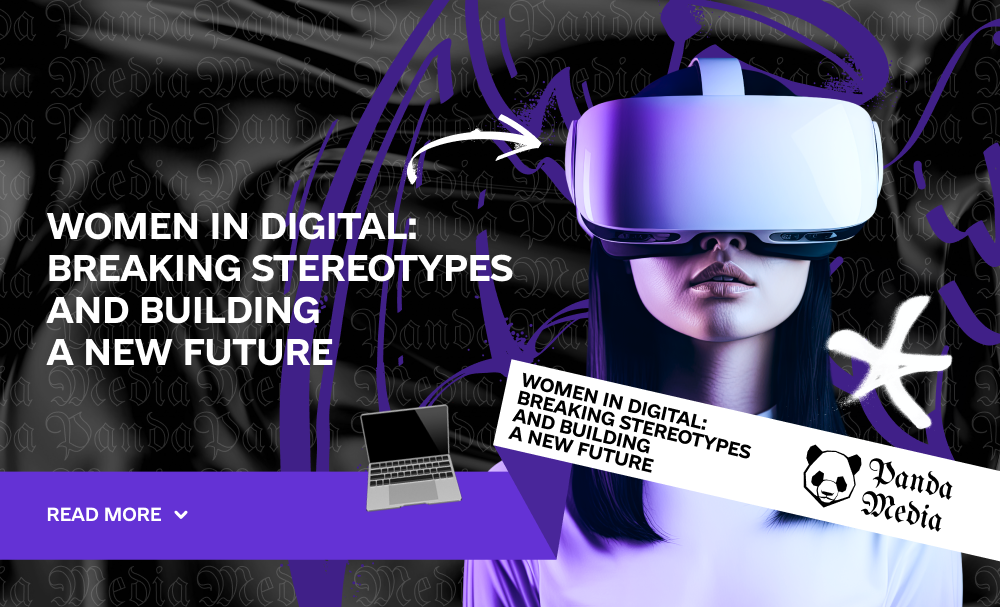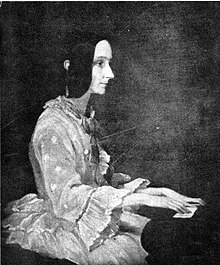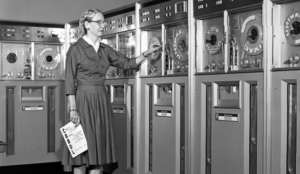Don't miss interesting news

Digital is a dynamic and constantly evolving world that values knowledge, creativity, logical thinking, and the desire for innovation. These qualities have no gender, which is why more and more women are choosing a career in the digital industry.
Even 15 years ago, the attitude towards women in this field was different. Jokes and stereotypes that belittled their abilities and devalued their contribution were common. For example: a female programmer is like a guinea pig, because she has nothing in common with either the sea or a pig.
At interviews in companies, it was the norm not to even consider women’s resumes, and the candidates themselves were suspected of wanting a quick arranged marriage and predicted that they would have a maternity leave in a year or two.
Today, such statements are unacceptable. It’s hard to imagine that we can hear such opinions seriously.
According to a DOU study conducted on June 12, 2023, 23% of Ukrainian IT professionals are women. This significant figure indicates that women are successfully mastering technical specialties and making a significant contribution to the development of the IT industry, and the industry itself is becoming more open and welcoming to professionals, regardless of gender.
Women have made a significant contribution to the development of the digital industry and continue to develop it today. We can safely talk about developers, UX/UI designers, programmers, media buyers, and this is the norm.
Affiliate marketing is a modern industry that has no gender restrictions and can be a real opportunity for women to achieve financial independence and self-realization. The number of successful female arbitrageurs is growing, as professional success does not depend on gender.
It is important to realize that the path to gender equality, particularly in Digital, is still ongoing.
Therefore, the feminine gender inherent in the Ukrainian language may still be surprising.
The use of feminine terms in areas traditionally considered “masculine” helps make the space more inclusive and comfortable for everyone.
And if someone else thinks that technical professions are “unfeminine,” many prominent women would argue with that.
Let’s get acquainted with the brightest female figures who have made a significant contribution to the development of computer technology throughout history.
Ada Lovelace (1815-1852)

British scientist, daughter of the famous poet George Byron, is considered the world’s first female programmer.
She collaborated with Charles Babbage on his mechanical analytical machine.
It turns out that Ada Lovelace created the first computer program 100 years before it was implemented – an algorithm for calculating Bernoulli numbers.
She also described the principle of the analytical machine, which later became the basis for modern computers.
A programming language was named in Ada Lovelace’s honor, and on her birthday, December 10, Programmer’s Day is celebrated.
Hedy Lamar (1914-2000)

Austrian and American actress and inventor.
Together with the composer George Antheil, she developed an encryption method that later became the basis for Wi-Fi, Bluetooth, and GPS technologies.
Unfortunately, her invention was not immediately appreciated, but she later received a patent and recognition for her work.
According to the Austrian actress Anita Zier, Hedy Lamar was born to a banker from a Jewish family in Lviv, and the girl’s mother was a pianist from Budapest.
Grace Hopper (1906-1992)

American mathematician and admiral in the US Navy.
She was one of the first programmers of the Mark I computer, created programs for automatic processing of data tables, and developed the first compiler for a programming language. It was she who coined the terms “bug” and “debugging”.
She made a significant contribution to the development of the COBOL programming language, which is still used in the economic sector and helps to solve business problems.
Mary Lee Woods (1924-2017)

English mathematician and programmer.
Her talent for mathematical sciences was evident in her childhood. Little Mary studied the program outside of school to learn more. Her excellent grades at university became a passport to a company that created commercial computers.
She was engaged in the development of algorithms, testing of equipment and programming. Thanks to Mary Lee Woods, the Manchester University Mark 1, Ferranti Mark 1, and Mark 1 Star computers were created.
And the creator of the Internet, the genius Tim Berners Lee, is her son, to whom she instilled a love of the exact sciences and programming since childhood.
Marissa Mayer (1975-)

American IT entrepreneur, the first woman at Google and the most successful CEO of Yahoo!
She graduated from Stanford University with a degree in artificial intelligence, which was still in its infancy.
In 1999, Marissa joined the promising Google company. She developed the company’s corporate culture and was in charge of internships for promising young professionals.
For 13 years, she worked on programming, design, artificial intelligence, and search. Thanks to her, we use Google Maps and see the modern Google as it is.
Today, Marissa’s name is constantly appearing in the rankings of the most influential women in the world.
At a time when women’s roles were largely limited to household chores and family maintenance, these discoveries and inventions were a real revolution.
Women are making successful careers in various IT specializations. According to data published by DOU, half of all IT professionals are developers, and only 8% of them are women.
There are much more women among designers – 48%, among managers – 39%, and in QA – 36%. The largest share of women compared to men is in HR/Recruiting (92%), Customer Success (73%), and Marketing (64%).
It is important to remember that sexism and ageism are unacceptable in the modern world.
Lead Panda employs real experts.
We sincerely love, respect, and appreciate our entire team for their professionalism and intelligence. Experience, professional qualities, and personal achievements are what really matter.
Let’s break stereotypes and start implementing the principles of respect and subordination.
Together, let’s build an IT future where equality and gender inclusion reign supreme!